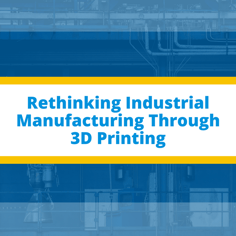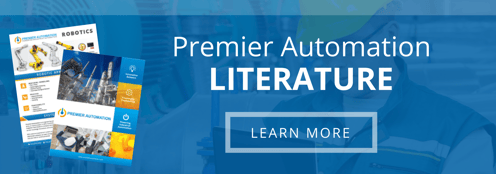 In a world driven by competitiveness, companies are getting more anticipative about the concept of 3D printing when it comes to expanding their manufacturing capabilities and bringing down costs. The fourth industrial revolution is upon us, one that would drive greater efficiencies by relying on latest digital technologies as well as on mass amounts of data from all ends. When such factors come into play, the concept of 3D printing becomes highly relevant and necessary for increasing competitiveness in the market.
In a world driven by competitiveness, companies are getting more anticipative about the concept of 3D printing when it comes to expanding their manufacturing capabilities and bringing down costs. The fourth industrial revolution is upon us, one that would drive greater efficiencies by relying on latest digital technologies as well as on mass amounts of data from all ends. When such factors come into play, the concept of 3D printing becomes highly relevant and necessary for increasing competitiveness in the market.
3D printing has been around for over three decades, but lack of advancements didn’t allow for widespread usage. However, 2012 marked the first year in which 3D printers actually provided a low-cost solution to small businesses looking to craft customized physical objects. Conventionally known as additive manufacturing, 3D printing has been tied up with the slow process of building physical models but breakthroughs in hardware & software have turned the tide. Printers of today are much more accurate & precise, and they allow final products to be presented in a much shorter time.
Areas such as product development, production, testing, etc. are eligible for receiving first-hand benefits of this innovative technology. As a product’s lifecycle shrinks and demand for customizable units arise, it becomes extremely hard to make margins meet using conventional practices. Instead, 3D printing technologies can provide manufactures a solution that not only reduces costs but accelerates demand. As a result, capabilities such as mass-customization and on-demand production are becoming a reality and more and more of a necessity today.
Mass Customization
The one size fits all strategy is quickly eroding as more customers look for products suitable for their own needs. These products can be as simple as door knobs to as complex as prosthetic limbs, where customization is the only way forward. However, some companies can only meet profit margins through mass production, something that becomes harder if the demand for mass customized products isn’t high. 3D printing can address such issues by taking away the retooling costs that prevent companies from breaking-even. In effect, manufacturers would be able to produce an infinite range of items with custom specs, without incuring any additional costs.
On-demand Production
Several items still exist in industrial sectors that aren’t high in demand but have a need that won’t be dying any time soon. The cost associated with producing such products outweighs the benefits of keeping them in the assembly-line. But what if the task of manufacturing such products is delegated entirely to a machine that can simply alter its settings on a moment’s notice and start production? 3D printing can allow on-demand manufacturing and send parts to customers without worrying about altering the processes, storage costs or maintenance of old machines.
The sustainable product design practices brought in by 3D printing can greatly eliminate manufacturers' low-volume parts worries. This would result in saved costs and as a result, a much higher return on investment (ROI) for the 3D printing apparatus.
About Premier Automation
Staying current with technology can be a huge differentiator in a company’s ability to keep costs down, improve performance, and ultimately stay competitive in today’s global marketplace. We are certain that we can offer the best automation, drive and power solution to your unique machine or manufacturing problem. If you're seeking a partner for your next automation or controls project, contact one of our experienced professionals to schedule a free on-site visit. Find out how Premier Automation can deliver innovative answers to your toughest automation questions.





